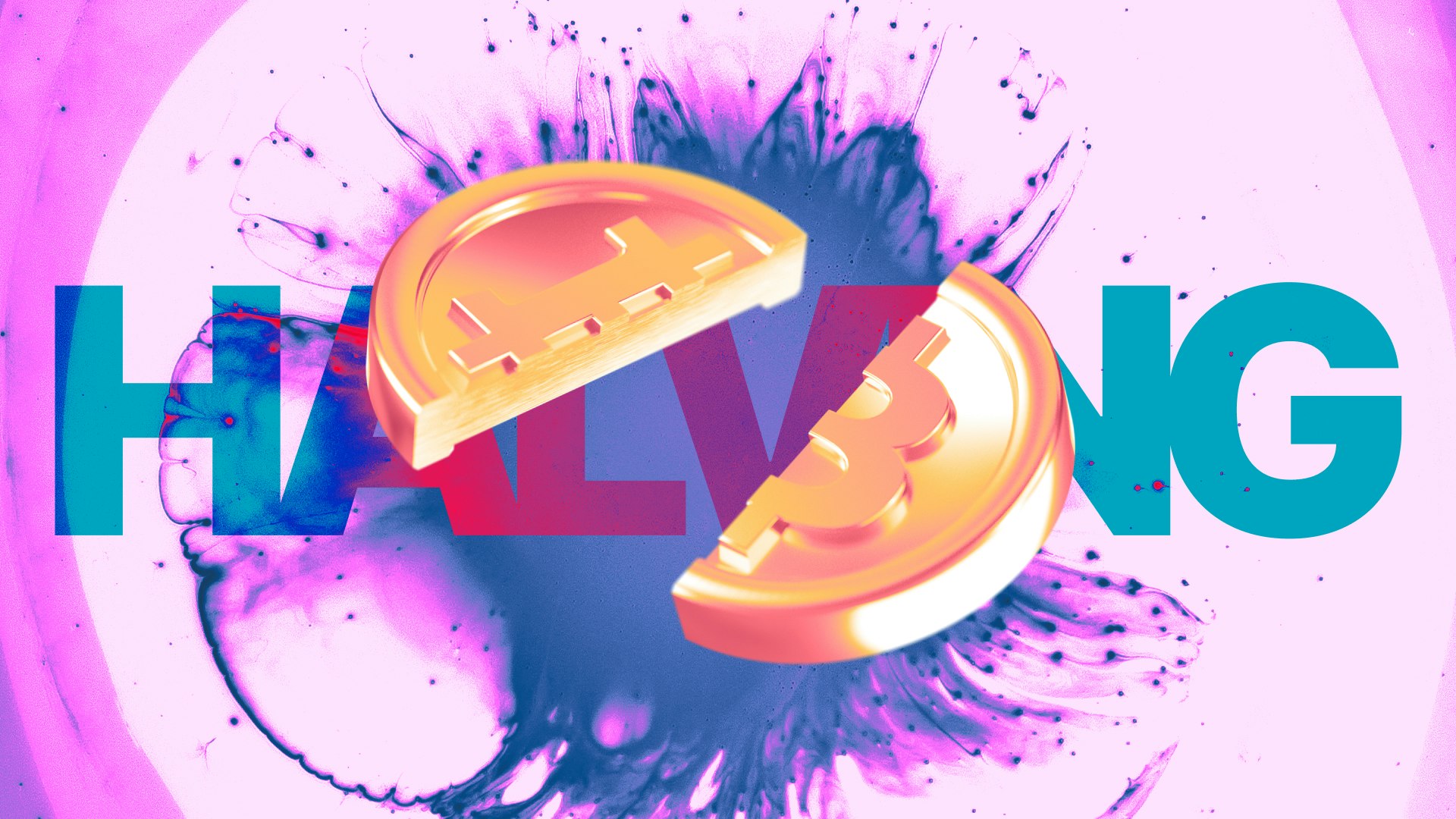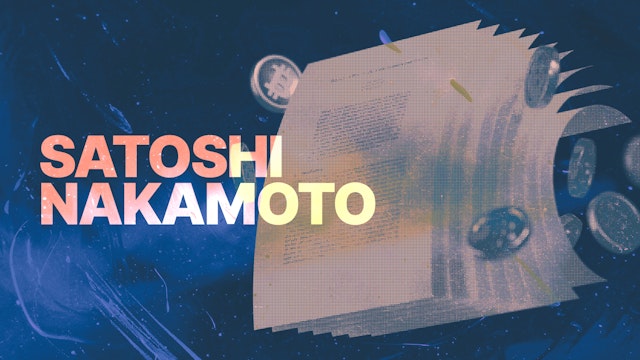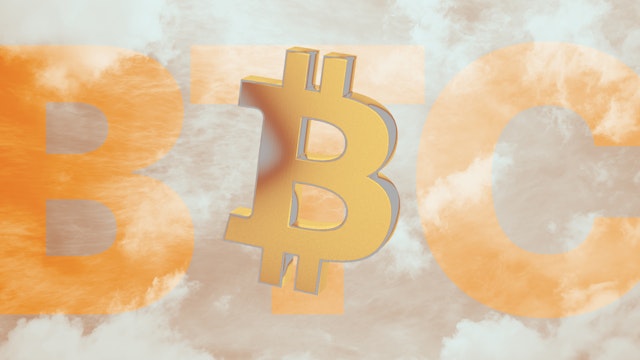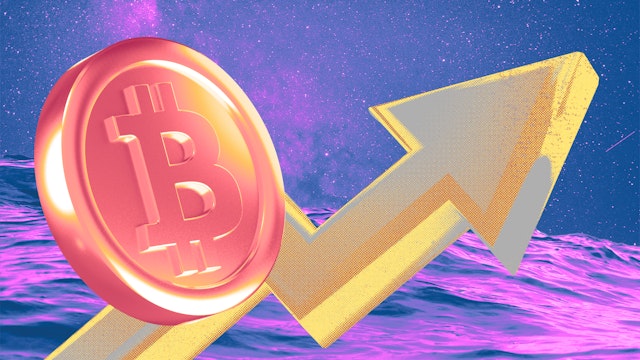The Bitcoin Halving - What is it and When Will it Happen?
The Bitcoin Halving is a big deal in the cryptocurrency world. But what does it mean and when does it happen? We explain the highlight of the crypto calendar.
In this article...
- What is the Bitcoin Halving?
- How often does the Bitcoin Halving happen?
- What happens to the Bitcoin price afterwards?

The Bitcoin Halving is one of the most significant events in the cryptocurrency calendar. Occurring once every four years, the Halving – sometimes also called the Halvening – results in a 50% reduction in the rate at which new Bitcoin gets produced.
But what actually happens when the Halving occurs? What are the consequences for Bitcoin and other cryptocurrencies? And why did Bitcoin inventor Satoshi Nakamoto build the Halving into the Bitcoin code in the first place?
Where does new Bitcoin come from?
To understand the Halving, first you need to know a little bit about how new Bitcoin is created.
Nakamoto intended Bitcoin to be an evolving and long-running monetary system. That meant it needed a mechanism by which new currency could enter the system in a controlled and gradual way.
The solution was to offer rewards to people who helped protect the system by verifying transactions made by other users. These people are known as “miners”.
In the very early days of Bitcoin, it was possible to mine Bitcoin with a home computer. But these days it’s a fully industrial process requiring huge racks of GPU processors and vast amounts of energy.
Bitcoin transactions are compiled into “blocks”. When a block reaches 1MB of data, it gets sent to the miners in the form of a complex cryptographic equation.
The miner that solves the equation verifies the transactions in the block and is given a certain amount of Bitcoin for their efforts. The transactions are then inscribed in the shared history of all Bitcoin transactions.
Why does the Halving occur?
Nakamoto wanted Bitcoin to be immune from what he saw as the sins of the world’s central banks. In particular, this referred to the ability to print money at will, a process which deliberately devalued the currency in question.
While this can be an important tool in a crisis, Satoshi believed these all-too-human bankers couldn’t be trusted to only use their powers in an emergency. The 2008 Global Financial Crisis was a case in point.
To combat this, Nakamoto built two features into the Bitcoin code. Firstly, there is a hard-cap of 21 million Bitcoin. And secondly, there is a process whereby the issuance of new Bitcoin would slow down over time.
These two innovations meant that Bitcoin’s issuance would be predictable, controlled and free from the whims of the humans who use it.
What happens when the Halving occurs?
The answer may seem obvious – the amount of new Bitcoin is reduced by 50% – but the consequences are far-reaching.
The first effect is that fewer Bitcoins enter the market. When Bitcoin was launched in 2009, each block generated 50 BTC for the successful miner. Now, three Halvings later, that’s been reduced to 6.25 BTC, or 900 Bitcoin per day.
After the next Halving – due April 20, 2024 – the number will drop to 3.125 BTC, or 450 Bitcoin per day.
That means demand and supply need to find a new balance, which historically has resulted in a medium- to long-term price increase although past performance is not a guarantee of future results.
The second effect is that the profitability of mining Bitcoin is immediately halved. This can have a significant impact on the Bitcoin mining industry.
Inefficient operators or those without sufficient financial buffers can be forced to close down, in a process known as “miner capitulation”.
Predicting Bitcoin price after the Halving
There can be significant price volatility after a Halving. Previous Halvings have seen price drops of 30-50% shortly before or after the Halving event.
While it’s hard to pinpoint the exact reason that this might occur, it’s probably some combination of increased supply due to miner capitulation, mixed with increased trading activity and the need to flush leverage out of the system.
At the end of the day, the Halving is the most predictable event in finance. If an outcome seems pre-ordained (less Bitcoin = increase in price), the market will almost always find a way to move in the other direction.
How does this affect other cryptocurrencies?
Technically the Halving doesn’t have any effect at all on other cryptocurrencies. As the first blockchain, Bitcoin has no connection to or dependency on any other network.
But in the tightly connected reality of the crypto market, anything that affects Bitcoin has a trickle-down effect on everything else.
Historically, the Halving has prompted increased attention, activity and eventually price rises for Bitcoin. This has led to similar and often larger price increases across the cryptocurrency market. However, the converse is also true – when the Bitcoin price collapses, altcoins tend to do even worse.
Why will miners verify transactions when all the Bitcoin has been mined?
Of that 21 million Bitcoin hard-cap, almost 19,700,000 Bitcoin have already been created. By the time the last Bitcoin is produced, somewhere around 2140, miners will only be receiving 1 Satoshi, or 0.00000001 BTC per verified block.
Even in the most optimistic projections, it’s hard to see that a single Bitcoin will be worth the tens of billions required to make mining these Bitcoins a worthwhile endeavour.
Transaction fees and demand
Transaction fees will be more important in the future. When you send a transaction to the blockchain to be verified, you have to pay a fee to the miners to have your data included in the next block.
When the network is under heavy demand, these fees can increase significantly. During the April 2021 trading frenzy – when Bitcoin first passed US$60,000 – the average price to perform a Bitcoin transaction reached US$60.
When mining rewards become less significant, it’s expected that transaction fees will be the primary way of getting miners to protect the network.
While this could result in eye-watering fees, fewer and fewer transactions will occur on the primary Bitcoin network. Instead so-called Layer 2 protocols, such as the Lightning Network, will become the way that everyday people transact in Bitcoin. The original Bitcoin layer will be reserved for significant transfers that require the added layer of protection.
Bitcoin Halving: Conclusion
The Bitcoin halving is a pivotal event that occurs approximately every four years, reducing the block reward for miners and maintaining the scarcity of new Bitcoins. As we approach the next halving, investors are watching for its impact on prices and the continued evolution of the cryptocurrency landscape.

Frequently asked questions
What is the Bitcoin halving event?
The Bitcoin halving is a significant event that occurs approximately every four years. During this event, the block reward for miners is reduced by half. In other words, the number of new Bitcoins created per block decreases by 50%. This reduction directly impacts the rate at which new Bitcoins are introduced into circulation.
The halving is an essential part of the Bitcoin reward system, designed to control the supply of new Bitcoins and maintain scarcity.
When is the next Bitcoin halving?
The next Bitcoin halving is expected to take place around April 2024. At that time, the block reward will be reduced from the current 6.25 Bitcoins per block to approximately 3.125 Bitcoins per block.
How does the Bitcoin halving work?
The halving is encoded into the Bitcoin blockchain protocol and occurs after every 210,000 blocks. Miners, who validate transactions and add them to the blockchain using proof of work, receive fewer rewards after each halving.
This process continues until all 21 million coins have been mined, which is estimated to happen around the year 2140. The halving ensures that Bitcoin remains scarce and deflationary.
What happens post-halving?
After each halving event, the rate of new Bitcoin issuance decreases. This scarcity, combined with historical increases in demand following previous halvings, can potentially lead to upward pressure on prices but this is not guaranteed.
Investors closely monitor the price movement around halving events, as they anticipate how reduced supply and sustained demand will impact the market.
Why is the Bitcoin halving important?
The halving directly affects the demand for Bitcoins. As the reward given to miners decreases, the scarcity of available coins increases. This inherent scarcity has historically driven up demand and contributed to Bitcoin’s departure from traditional fiat currencies.
Additionally, the halving serves as a mechanism to maintain the integrity of the network and incentivise miners to continue validating transactions.
The 2024 halving, where miners halve the reward for processing transactions, is important to remember because historically it has sometimes led to BTC price surges.
Halvings in 2012, and beyond, demonstrate the halving impact on the supply of Bitcoins, steadily decreasing it towards the maximum supply, ultimately influencing the total supply.

Suggested Articles

Who Is Satoshi Nakamoto, the Mysterious Bitcoin Creator?
The mysterious creator of Bitcoin has never been exposed... yet. Who is it? Here's what we know so far... Read more
Bitcoin Dominance: Is Alt Season Near? Technical Analysis May Provide Clues
What is Bitcoin Dominance? And how can keeping an eye on it give insight into alt season? Here is the explainer.Read more
How to Buy Bitcoin (BTC) in the UK the Convenient Way
Want to Buy Bitcoin in the UK? Buy BTC the convenient way by using CoinJar. They have been in operation since 2013.Read moreBrowse by topic
Standard Risk Warning: The above article is not to be read as investment, legal or tax advice and it takes no account of particular personal or market circumstances; all readers should seek independent investment advice before investing in cryptocurrencies.
The article is provided for general information and educational purposes only, no responsibility or liability is accepted for any errors of fact or omission expressed therein. Past performance is not a reliable indicator of future results. We use third party banking, safekeeping and payment providers, and the failure of any of these providers could also lead to a loss of your assets.
We recommend you obtain financial advice before making a decision to use your credit card to purchase cryptoassets or to invest in cryptoassets.
Capital Gains Tax may be payable on profits.
CoinJar's digital currency exchange services are operated in the UK by CoinJar UK Limited (company number 8905988), registered by the Financial Conduct Authority as a Cryptoasset Exchange Provider and Custodian Wallet Provider in the United Kingdom under the Money Laundering, Terrorist Financing and Transfer of Funds (Information on the Payer) Regulations 2017, as amended (Firm Reference No. 928767).
In the UK, it's legal to buy, hold, and trade crypto, however cryptocurrency is not regulated in the UK. It's vital to understand that once your money is in the crypto ecosystem, there are no rules to protect it, unlike with regular investments.
You should not expect to be protected if something goes wrong. So, if you make any crypto-related investments, you're unlikely to have recourse to the Financial Services Compensation Scheme (FSCS) or the Financial Ombudsman Service (FOS) if something goes wrong.
The performance of most cryptocurrency can be highly volatile, with their value dropping as quickly as it can rise. Past performance is not an indication of future results.
Remember: Don't invest unless you're prepared to lose all the money you invest. This is a high-risk investment and you should not expect to be protected if something goes wrong. Take 2 mins to learn more.
UK residents are required to complete an assessment to show they understand the risks associated with what crypto/investment they are about to buy, in accordance with local legislation. Additionally, they must wait for a 24-hour "cooling off" period, before their account is active, due to local regulations. If you use a credit card to buy cryptocurrency, you would be putting borrowed money at a risk of loss.
We recommend you obtain financial advice before making a decision to use your credit card to purchase cryptoassets or to invest in cryptoassets.
Your information is handled in accordance with CoinJar’s Privacy Policy.
Cryptoassets traded on CoinJar UK Limited are largely unregulated in the UK, and you are unable to access the Financial Service Compensation Scheme or the Financial Ombudsman Service.
We use third party banking, safekeeping and payment providers, and the failure of any of these providers could also lead to a loss of your assets.
We recommend you obtain financial advice before making a decision to use your credit card to purchase cryptoassets or to invest in cryptoassets. Capital Gains Tax may be payable on profits.
CoinJar’s digital currency exchange services are operated in the UK by CoinJar UK Limited (company number 8905988), registered by the Financial Conduct Authority as a Cryptoasset Exchange Provider and Custodian Wallet Provider in the United Kingdom under the Money Laundering, Terrorist Financing and Transfer of Funds (Information on the Payer) Regulations 2017, as amended (Firm Reference No. 928767).
Apple Pay and Apple Watch are trademarks of Apple Inc. Google Pay is a trademark of Google LLC.
This site is protected by reCAPTCHA and the Google Privacy Policy and Terms of Service apply.

